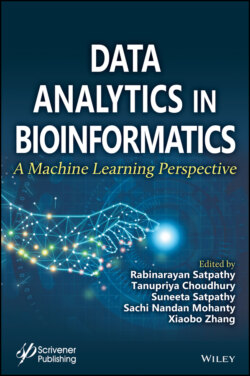Читать книгу Data Analytics in Bioinformatics - Группа авторов - Страница 20
1.3 Classification and its Types
ОглавлениеClassification is a task in ML, which deals with the organized process of assigning a class label to an observation from the problem domain. It is a sub-group of the supervised form of ML. The traditional classification algorithm was invented by a Swedish botanist Carl Von Linnaeus and depicted in Ref. [33]. In the process of calculating the desired output in supervised learning, this classification is more effective when the input attribute is in the form of a discrete. The Classification approach always helps the user for taking decisions by providing the classified conclusions from the observed data, values as discussed in Refs. [34–36]. Figure 1.7 tries to present a classification graph by executing the data of different persons who are suffering from heart disease or not.
In the above figure, the patients that are suffering from Heart disease are represented by the triangle symbol, and those who are not, are represented by rectangle symbols. The hyperplane (partition) line depicts the bifurcation between these two classified entities. In general, there are four types of classification techniques. They are:
Figure 1.7 Concept of classification.
Binary Classification: It considers the tasks of classification where the class labels are two, and the two classes consider one in the normal state and the other in the abnormal state [37].
Imbalanced Classification: It involves the tasks of classification where the examples are unequally distributed in the class [38].
Multi-label Classification: It involves the tasks of classification where the number of class labels is two or greater than two where for every example one or more than one class label may be predicted [39].
Multi-Class Classification: It involves the tasks of classification where the number of class labels is greater than two [40].
Figure 1.8 Classification based on gender.
For Achieving the Classification approach more precisely, a heart disease dataset [41] has been used that comprises of a total of 1,025 people out of which 312 are females and 713 are males. A particular reason behind taking this dataset is that people are continuously suffering from heart diseases, this is so because people who consume alcohol excessively, consume oily and fast food and also inhale dangerous gases due to pollution. This Classification of gender is given below in Figure 1.8.
